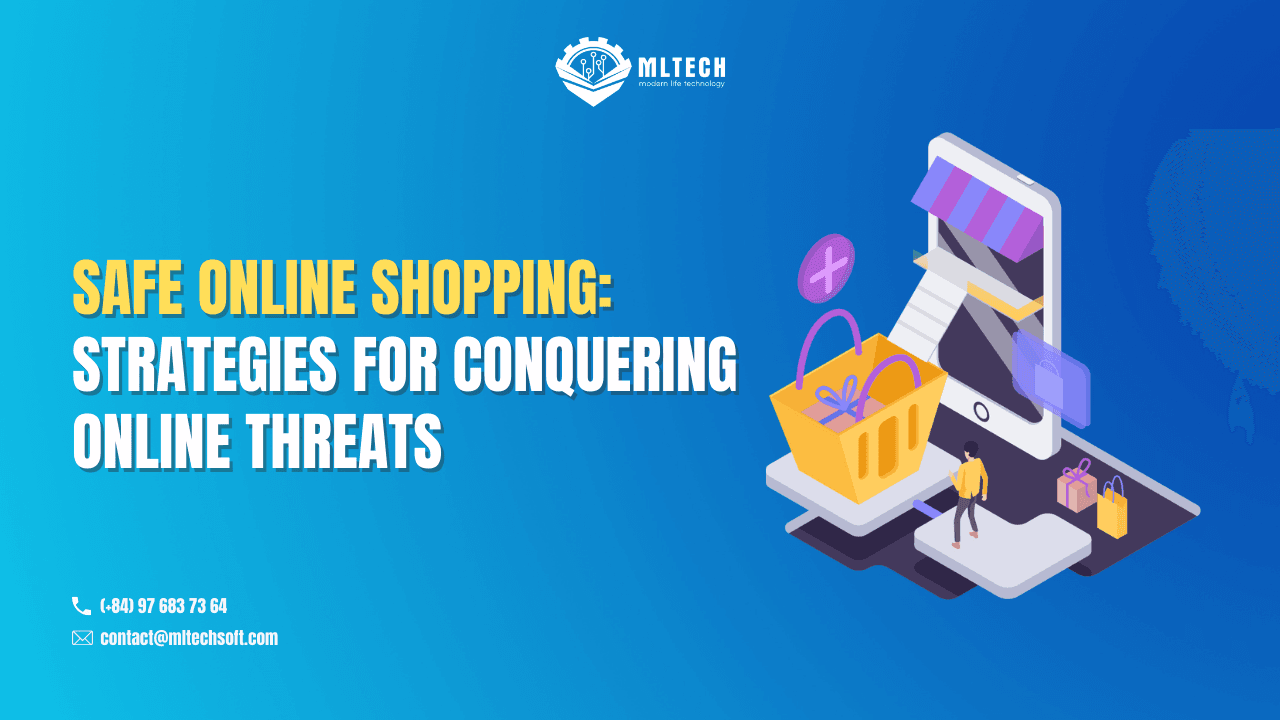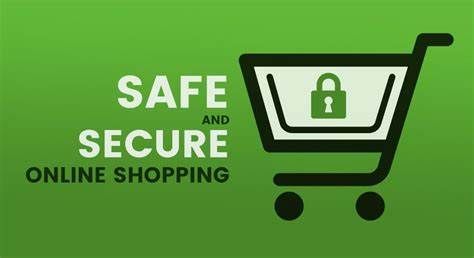Scroll down for more
Safe Online Shopping: Strategies for Conquering Online Threats

With the rapid rise of online shopping, businesses are recognizing the importance of providing their customers with a secure and safe online shopping experience.
However, the growing reliance on digital platforms has also made businesses more susceptible to cyber threats, such as data breaches, hacking, and identity theft. Therefore, companies must implement safe shopping strategies.
In this article, let's explore some of the most effective strategies for conquering online threats.
1. How do we ensure safe online shopping?
With the increasing popularity of online shopping, the safety of online transactions has become a critical concern for consumers. Online sellers must offer convenience while also presenting a risk of fraud, identity theft, and other security issues.
To ensure safe online shopping, there are several steps that both consumers and businesses can take.
Only shop on reputable websites with a secure connection
A secure connection is indicated by the "https" at the beginning of the website's address. It means the website uses a safe encryption protocol to protect users' data.
Additionally, consumers should avoid clicking links or downloading files from unsolicited emails or messages, as they may contain malware or phishing scams.
Use a credit card instead of a debit card or bank transfer
Credit cards offer greater protection against fraud. Consumers can dispute charges if they suspect unauthorized transactions.
Additionally, consumers should regularly review their bank and credit card statements for unauthorized charges.
Use strong and unique passwords
Passwords should be a combination of letters, numbers, and symbols. Users should change their password regularly.
Additionally, businesses can set up two-factor authentication (MFA), which requires customers to provide two forms of identification to access their accounts.
Use readily available firewalls
Firewalls are network security systems that monitor and control incoming and outgoing traffic based on security rules.
Businesses should also choose a reputable hosting provider with a secure hosting environment and regular backups to protect customer data.

Ensuring safe online shopping requires consumer awareness and business best practices. By following these steps, consumers and businesses can help maintain trust and confidence in online shopping.
2. In what ways is it crucial to ensure the safety of online transactions?
With the convenience of online transactions, security measures are crucial to ensure that personal and financial information remains secure.
Here are some benefits of protecting safe online shopping transactions:
Protect individuals from fraud and identity theft
In the digital age, cybercriminals easily access personal and financial information. Implementing security measures makes it much more difficult for hackers to access sensitive information and reduces the risk of identity theft and fraud.
Prevent data breaches
A data breach can occur when a hacker accesses personal and financial information. Hackers can use personal information to commit fraud or sell on the dark web.
By ensuring the safety of online transactions, businesses can protect customer data and maintain the trust of their clients.
Maintain consumer confidence in e-commerce
A lack of confidence can lead to decreased sales and lost revenue for businesses. Companies can assure consumers that their personal and financial information is secure. It can help maintain trust and confidence in online transactions.
3. Effective Strategies for Dealing with Online Shopper Safety
3.1. Incorporate readily available firewalls
Firewalls are a vital component of network security that help to protect computer systems from cyberattacks. Incorporating readily available firewalls is an essential step to prevent attacks and maintain the privacy of sensitive data.
By investing in a firewall, businesses can take proactive steps to protect their networks and the sensitive data that they handle.

3.2. Use and demand complicated passwords
One crucial step in safeguarding your online shopping experience is to use and demand complicated passwords. A strong password can make it harder for hackers to access your account and steal your information.
In fact, many online retailers now require users to create complex passwords that combine upper and lowercase letters, numbers, and symbols. By creating a strong password, you can ensure the safety and security of your online shopping experience.
3.3. Set up two-factor authentication (MFA)
MFA adds an extra layer of security to your account by requiring you to enter a security code. This code can be sent to your phone, email, or generated by an app on your device.
MFA helps prevent unauthorized access to your account, even if someone else gains access to your password. With MFA, you can rest assured that your online shopping experience is safe and secure.
3.4. Educate your staff
Educating can ensure that customers' information is protected and that their online shopping experience is safe and secure. It includes training on password security, identifying and avoiding phishing scams, and maintaining up-to-date software and security protocols.
Well-informed staff can help identify potential security risks and take appropriate action for their companies and customers from cyber threats.

3.5. Use safe hosting
Safe hosting involves choosing a reputable hosting provider with a strong security track record. Remember to update your websites with the latest security patches regularly.
Safe hosting ensures the safety and security of your customers' information. It can also build trust and loyalty with your audience and ultimately boost your sales.
3.6. Be sure to research local regulations
Rules, such as privacy, data protection, and consumer rights, can vary widely from region to region. Sometimes, these regulations can lead to legal and financial consequences.
Before expanding your business, it's crucial to research the local regulations. You must ensure that your online shopping business is operating legally and responsibly.
3.7. Make frequent changes to your site
Making frequent changes to your site can not only help you stay ahead of the competition, but it can also help you increase your sales.
Changes to your site can include refreshing the appearance, updating product descriptions, and adding new products or features. By making these changes, you can keep your website fresh and engaging with your target audience.
Making frequent changes to your site can also improve your search engine rankings, making it easier for customers to find your site and boosting your visibility.
3.8. Backup Your Site Frequently
Frequent backups will protect your website data, files, and configurations in case of an outage or other disaster. Backing up your website frequently is a relatively easy and cost-effective process. You can conduct a backup automatically with plugins or services from your hosting provider.
4. Conclusion
Staying up-to-date on the latest security trends and best practices is essential to ensure a safe and successful online shopping experience. Safe online shopping is beneficial and achievable with the right strategies in place.
Get our blog
Want the latest and greatest from our blog straight to your inbox? Chunk us your details and get a sweet weekly email.
Read more in our blog

Project Management
The Rise of AI-Generated Code: Opportunities & ChallengesExplore how AI-generated code is transforming programming with tools like GitHub Copilot and AlphaCode. Learn about the opportunities it offers—faster development, accessibility—and the challenges like security and ethics we must address.

Project Management
The Impact of Dynamic Pricing on Customer BehaviorExplore the impact of dynamic pricing on customer behavior and learn how to implement effective pricing strategies.

Project Management
Focus in Scrum: Keeping Your Team on TrackDiscover effective strategies to maintain focus within your Scrum team, overcome common challenges, and boost productivity.
MLTECH SOFT